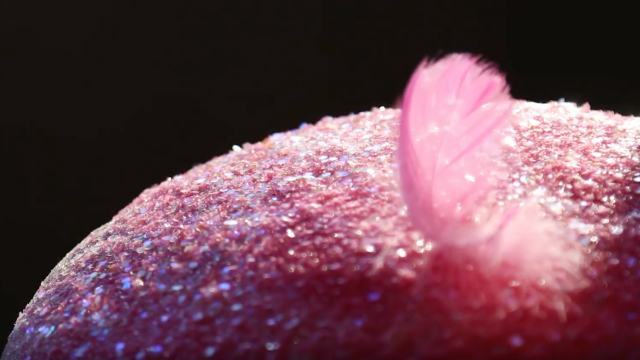This holiday season, the Food and Drug Administration has issued an important, somehow not obvious piece of advice to the public: Please don’t eat or use glitter in your baked goods unless it’s clearly labelled as edible.
The FDA’s advice came courtesy of a consumer update sent out Friday morning. The update featured a short video showcasing an admittedly delicious-looking cake covered in non-edible glitter.
“FDA wants you to be aware that some decorative glitters and dusts promoted for use on foods may, in fact, contain materials that should not be eaten,” the agency said. “But consumers need to be aware that these materials may contain materials that should not be eaten.”
Amazingly, it’s not the first time the FDA has felt obligated to step in and tell people to put down the forkful of glitter. In November, the agency sent out a warning about the trend, which itself was an update to a similar warning released in 2016. The origin of the mess seems to be tied to a trend in recent years of celebrity bakers, cooking shows, and restaurants using decorative glitter on their cakes and other treats.
Luckily for those hoping to reenact their preschool days, there are lots of sparkly products that are perfectly safe to eat. According to the agency, these usually spell out on their labels that they are edible, or contain ingredients like sugar, acacia (gum arabic), maltodextrin, cornstarch, and colour additives specifically approved for food use. Glitters with no list of ingredients or with labels that only say they’re “non-toxic” or “decorative” probably aren’t the kind for eating. Don’t eat those ones.
If you’re not eating bedazzled baked goods you made yourself, the agency added, you should ask your baker or cake-maker about the glitter they’re using. Commercial bakers, meanwhile, should remember that it’s their “responsibility as a food manufacturer to produce food that complies with the Federal Food, Drug and Cosmetic Act and applicable FDA regulations,” the FDA said, adding that “manufacturers of food containing unsafe ingredients are potentially subject to FDA enforcement actions to keep unsafe products out of the marketplace.”
The agency’s warning doesn’t discuss what exactly could happen to you if you do end up noshing on non-edible glitter. Given that these products are generally labelled non-toxic, though, eating a small dose probably shouldn’t be that dangerous. Some people have reported eating or seeing a loved one eat glitter products, and claimed that it made their poop sparkle, while others have complained that their attempts did no such thing. (We here at Gizmodo do not endorse trying to find out for yourself.)
The FDA has not immediately responded to a request for comment from Gizmodo regarding whether it has received injury reports from people eating non-edible glitter, or what the health risks might be.
[FDA]
